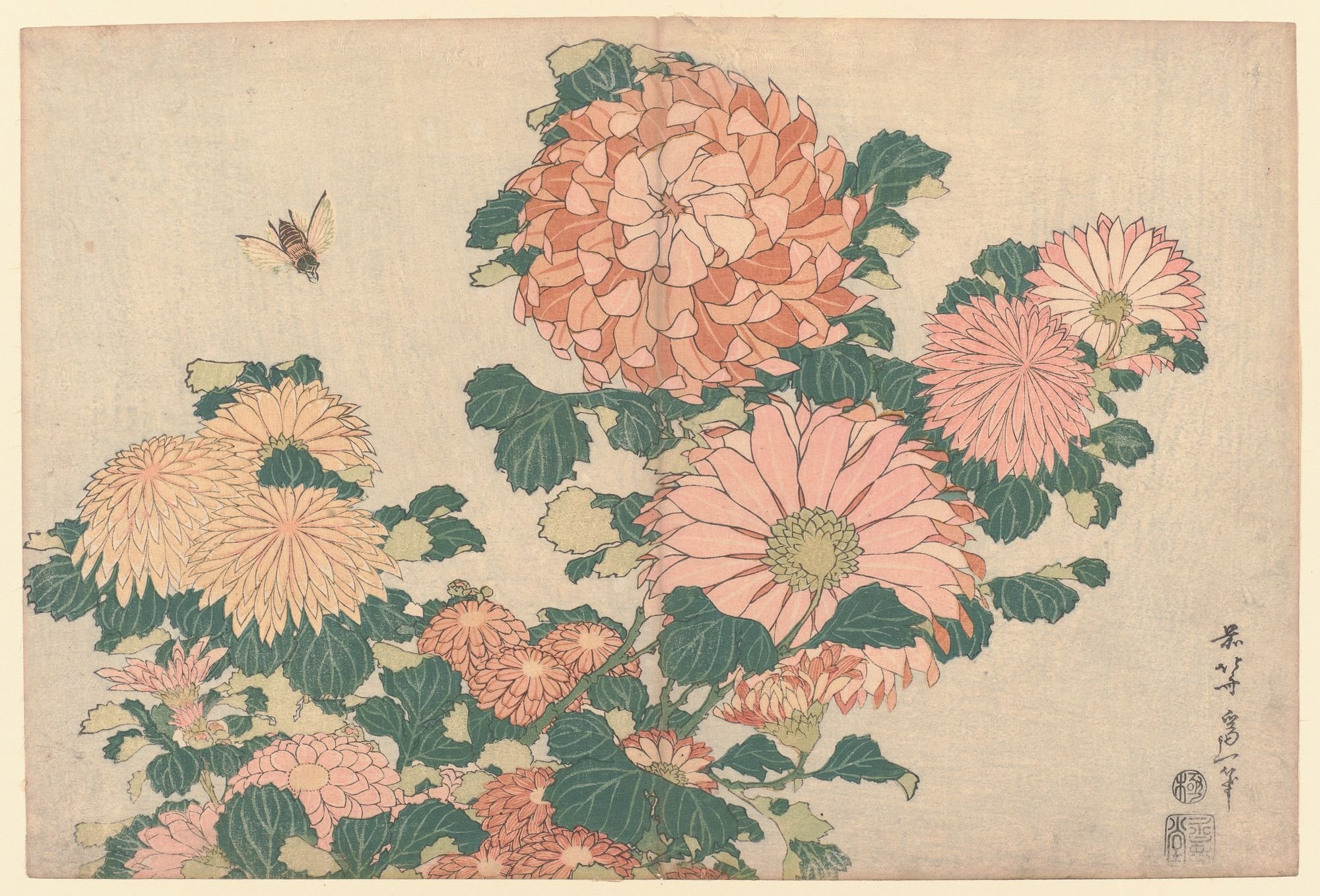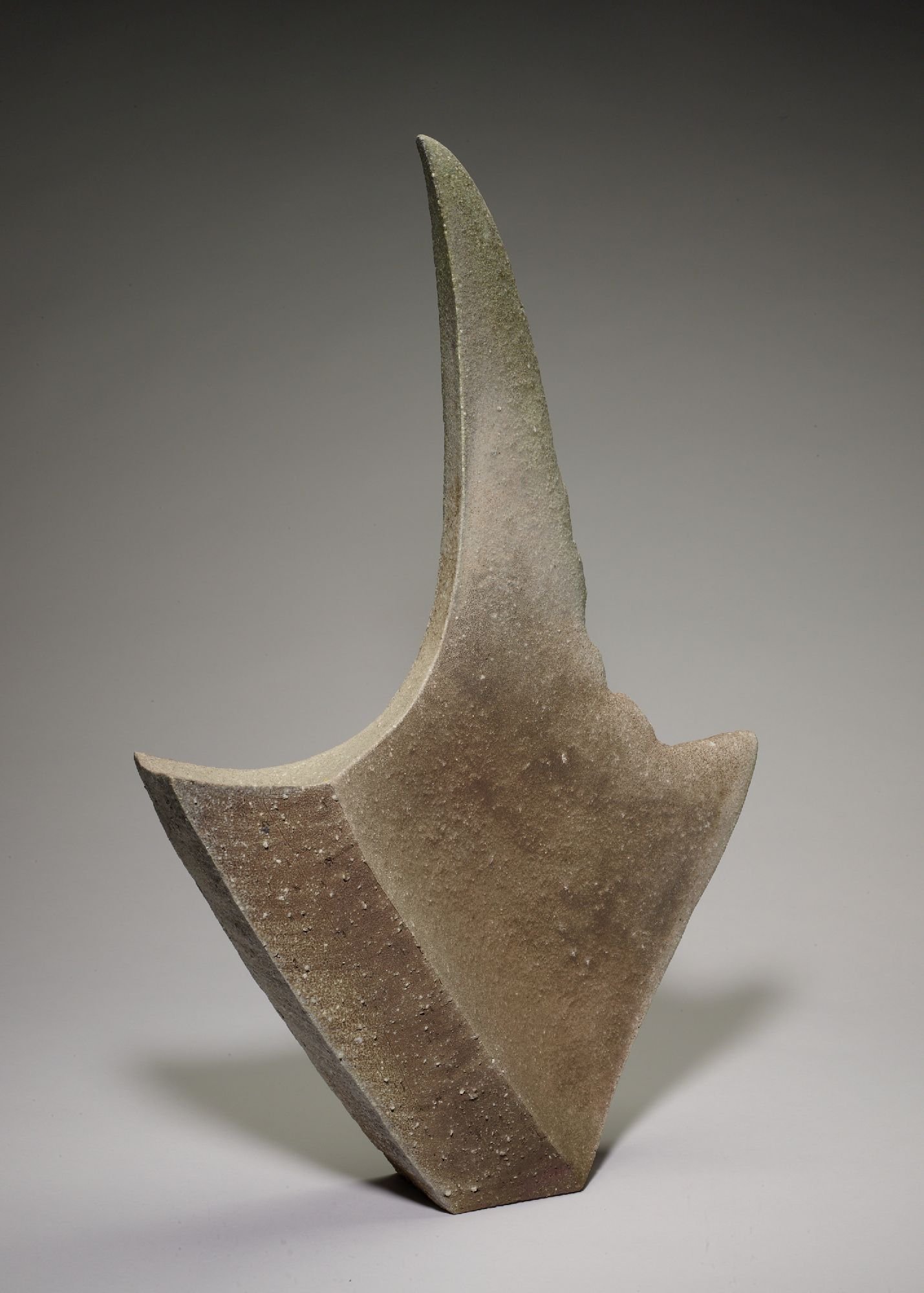
Tibetan Buddhist Shrine Room: The Alice S. Kandell Collection
“Tibetan Buddhist Shrine Room: The Alice S. Kandell Collection” includes more than two hundred gilt-bronze sculptures, paintings, silk hangings, and carpets that were created in Tibet between the 1300s and early 1900s.

Hokusai | Monet
In 1897, the French painter Claude Monet made four paintings of the chrysanthemums in his garden in Giverny, capturing them not in a vase but en plein air—painting the flowers as they grew. He had been an avid collector of Japanese prints since the 1870s, and his unexpected, expressive use of space in this experiment recalls the Large Flowers series of prints made between 1833 and 1834 by Katsushika Hokusai.

Bizen: Contemporary Expressions of an Ancient Japanese Pottery
Bizen ware, characterized by its rich reddish-brown clay with natural ash glaze, is one of Japan’s six pottery traditions.

Splendid Patchwork: Buddhist Monastic Robes
This magnificent group of robes from Mia’s collection belonged to high-ranking Buddhist priests. Known as kashaya, they were designed to be draped over the left shoulder, under the right arm, and fastened in front under the left shoulder, and are more elaborate than the robes worn by most Buddhist monks.

Year of the Dragon: Mystical Creatures of the Sky
From the dragon’s first appearance in art some eight to nine thousand years ago, during the early Neolithic period, these ferocious beasts have occupied an honored place in Chinese culture.

Chaos: Ken Matsubara’s Buddhist Masterwork
Two paintings, 600 years apart: the 14th century Taima Mandala and the 20th century Chaos by Ken Matsubara. Despite the chronological distance between them, these two pieces are connected by Buddhist threads. In this installation, accompanied by the echoes of singing bowls, the visitor acts as the bridge between Matsubara’s depiction of human struggle and the Taima Mandala’s immaculate Pure Land.

The Root Collection: Living with Japanese Ceramics
Tamara and Michael Root have created one of the largest, most diverse collections in the Twin Cities of studio ceramics from the 20th and 21st centuries. For nearly 35 years, they have followed the Minnesota ceramic arts scene and collected nationally and internationally, assisted by knowledgeable dealers. Now retired professors, they truly lived with these works, showing a large selection in museum-worthy displays in their South Minneapolis home.

Fukuda Kodōjin: Japan’s Great Poet and Landscape Artist
Fukuda Kodōjin (1865–1944) was one of a handful of scholar-artists who continued the tradition of Japanese literati painting (nanga) after 1900. Kodōjin’s painting style is characterized by bizarrely shaped mountain forms rendered in vivid color or monochromatic ink that often include a solitary scholar enjoying the expansive beauty of nature. Not only a painter, Kodōjin was also an accomplished poet and calligrapher patronized by influential industrialists and politicians of the era. Following his death, he slipped into obscurity, and today is better appreciated outside his native Japan. This is the first-ever exhibition of Kodōjin outside Japan, accompanied by a 344-page catalogue.

The Art of Literacy in Early Modern Japan
Reading and writing were popular pastimes in early modern Japan. From the 1600s to the 1800s, the printing industry developed rapidly, making printed materials available to readers in urban and rural areas alike.

Eternal Offerings: Chinese Ritual Bronzes
Bronze vessels held great ritual significance in ancient China. Used to make offerings to heavenly and ancestral spirits, these exquisite objects were also symbols of power. Mia’s Chinese art curator Liu Yang and world-renowned art director and film designer Tim Yip (Crouching Tiger, Hidden Dragon) will create an experiential exhibition that engages the senses. Featuring some 150 Chinese bronze objects from Mia’s collection, “Eternal Offerings” offers an immersive experience designed to evoke the mystery of heavenly and ancestral worship. Each gallery will embody a facet of the rituals enacted to honor the divinities, from the solemnity of the temple, to the intoxication of lavish banquets.

Teo Nguyen: Việt Nam Peace Project
Teo Nguyen’s solo museum exhibition invites contemplation and reflection on the Vietnamese people’s struggles toward peace and what the artist calls “the politics of worthiness.” Nguyen tells stories of heartbreak, optimism, resistance, and reconciliation that are interwoven into Vietnamese culture and spiritualism.

20 Dances: Japanese Calligraphy Then and Now
In East Asia, calligraphy has been hailed as the highest of all art forms for more than 15 centuries. It’s not hard to understand why: With more than 80,000 Chinese characters and infinite graphic variations, the expressive potential is unlimited.
